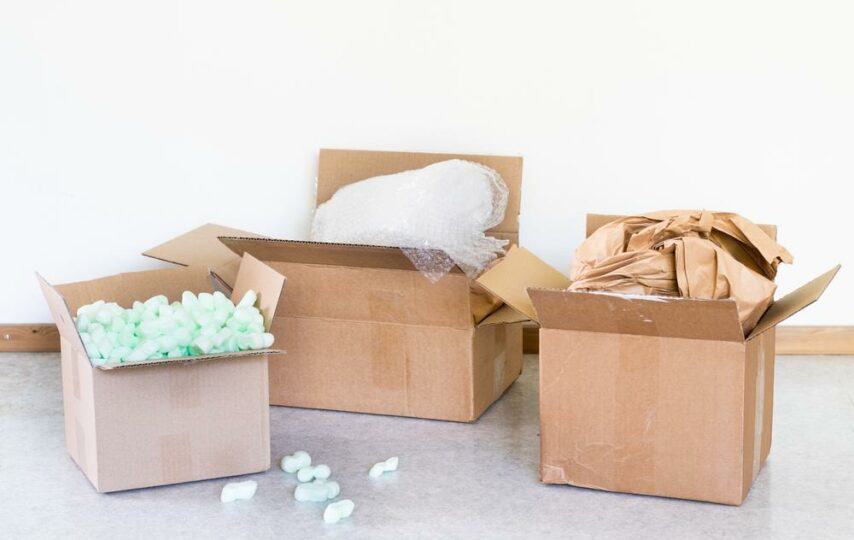You know you need to protect your company’s goods during shipping with the proper packaging — but you might not know what the proper packaging entails. When it comes to product packaging, most businesses need to balance effectiveness and appearance with cost, which means understanding all the packaging options. Before you talk to a packaging expert, you might use this primer on protective packaging to understand the basics available to your business and your products.
Packing Paper
Packing paper is a specialized type of paper designed to wrap around goods in shipping. Sometimes a variety of butcher paper or kraft paper, packing paper tends to be thicker and stronger than typical paper, which helps it protect goods from scratches and scrapes. Some shippers ball up packing paper to use as void filler or wrap goods generously in paper to provide more cushioning.
Tissue Paper
On the other end of the paper spectrum, tissue paper is thinner — usually translucent — and extremely pliable. Tissue paper tends to provide a more attractive presentation of a product, so many shippers prefer tissue paper over packing paper when sending goods directly to customers. Though tissue paper is slightly less durable than packing paper, it can be wrapped around goods generously for minor protective effects.
Packing Peanuts
Arguably the most well-known type of protective packaging, packing peanuts falls under the category of loose fill. Almost always made of polystyrene foam, peanuts fill empty space within packages to help prevent goods from shifting during shipping and handling. Peanuts can be especially useful when you are shipping multiple items in a single box, as they can flow around goods of all shapes and sizes to provide identical protection.
Crinkle Paper
Another type of loose fill, crinkle paper consists of strips of paper that have been folded into an accordion shape. Crinkle paper offers many of the same benefits of packing peanuts, except that it is both more attractive and more environmentally friendly. However, crinkle paper can be more expensive than peanuts, so you need to determine whether your customers will value the look and sustainability of paper fill over foam.
Inflatables
Inflatable pouches, also called air bags, are becoming increasingly popular thanks to their affordability. This type of packaging functions both as cushioning and as void filler, but it uses a minimum amount of material to protect shipped goods. You will need a specialized tool to inflate bags in your shipping warehouse, but if you send a large volume of packages and care little about presentation, it may be a worthwhile investment.
Bubble Wrap
Another notorious type of protective packaging, bubble wrap helps to cushion objects in transit with hundreds of tiny air-filled bubbles. Traditionally, the wrap comes as a single sheet of bubbles in a uniform size, but you can acquire bubble bags, which are bags of bubble wrap material, to fit snugly around your specific goods.
Honeycomb Paper
An eco-friendly alternative to bubble wrap, honeycomb paper is a type of paper that has been laser or die cut in a special pattern to expand and create a cushion around products. Like bubble wrap, it most often comes in sheets that must be wrapped around goods, but it can also be purchased as pouches or bags. Because honeycomb paper is newer and less widely available, it does tend to come with a higher price tag, but for some companies, the sustainability and visual interest of the paper is worth the cost.
Packaging Foam
Goods that are especially fragile or delicate might need more heavy-duty cushioning within shipping packages. For these goods, dense packaging foam might be the best option. Thick sheets of foam can be cut or molded to fit snugly around goods to fill empty spaces and hold items firmly in place. You might also employ impact sensors as you work to determine the best density and style of foam to keep your goods safe through shipping and storage.
With more information about your packaging options, you can begin to experiment with your packaging strategies and processes to ensure that your goods uphold your brand values as they travel from here to there.
Which Weighing System Should You Choose?
Mettler Toledo BC60 is a highly reliable and technologically advanced weighing system designed to meet the needs of various industries. Renowned for its accuracy, durability, and user-friendly interface, the BC60 offers comprehensive weighing solutions for a wide range of applications.
It is equipped with high-precision weighing technology that ensures accurate and reliable results. Its advanced load cell technology, combined with intelligent algorithms, enables precise measurements even for small weights.







